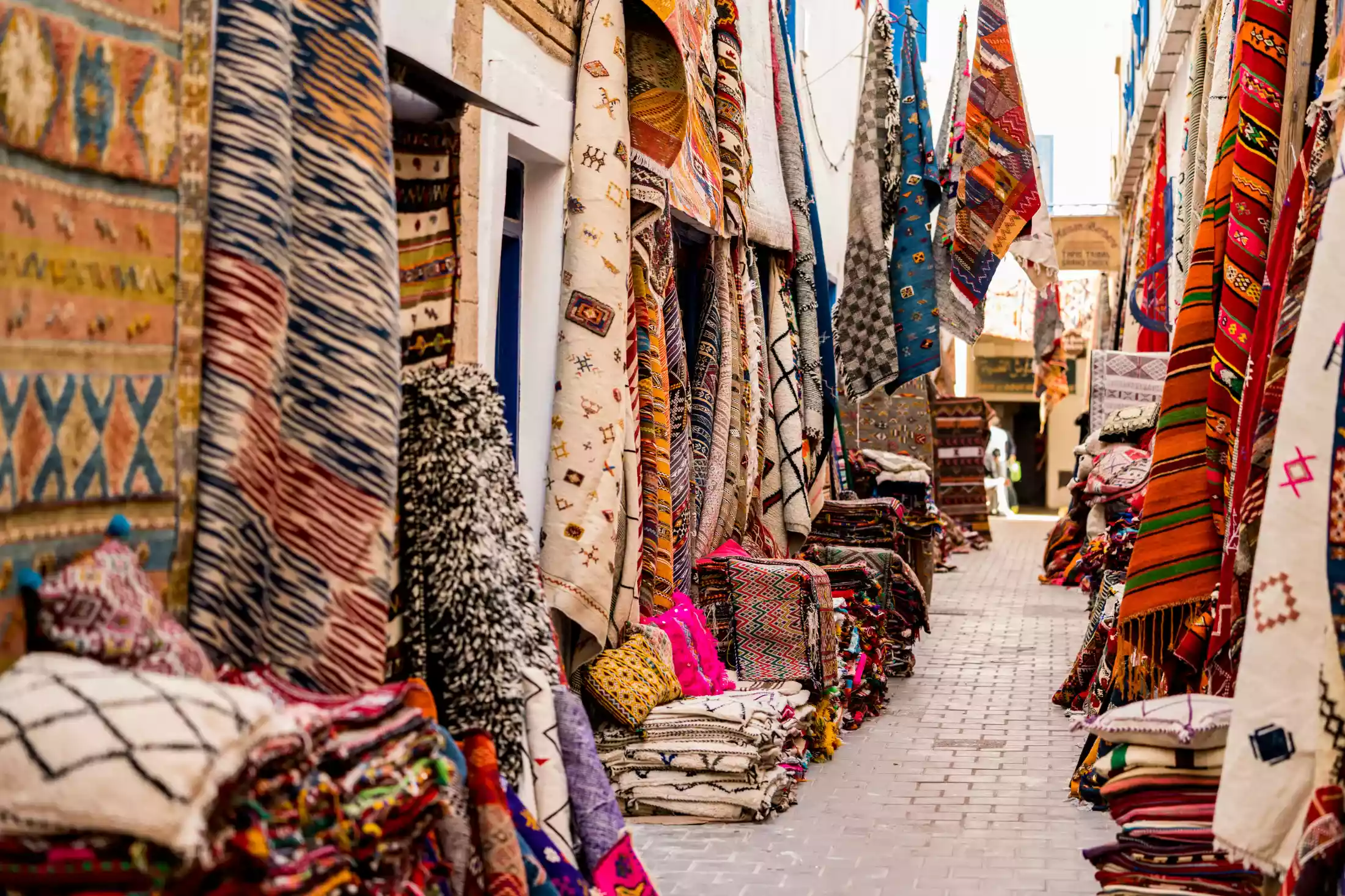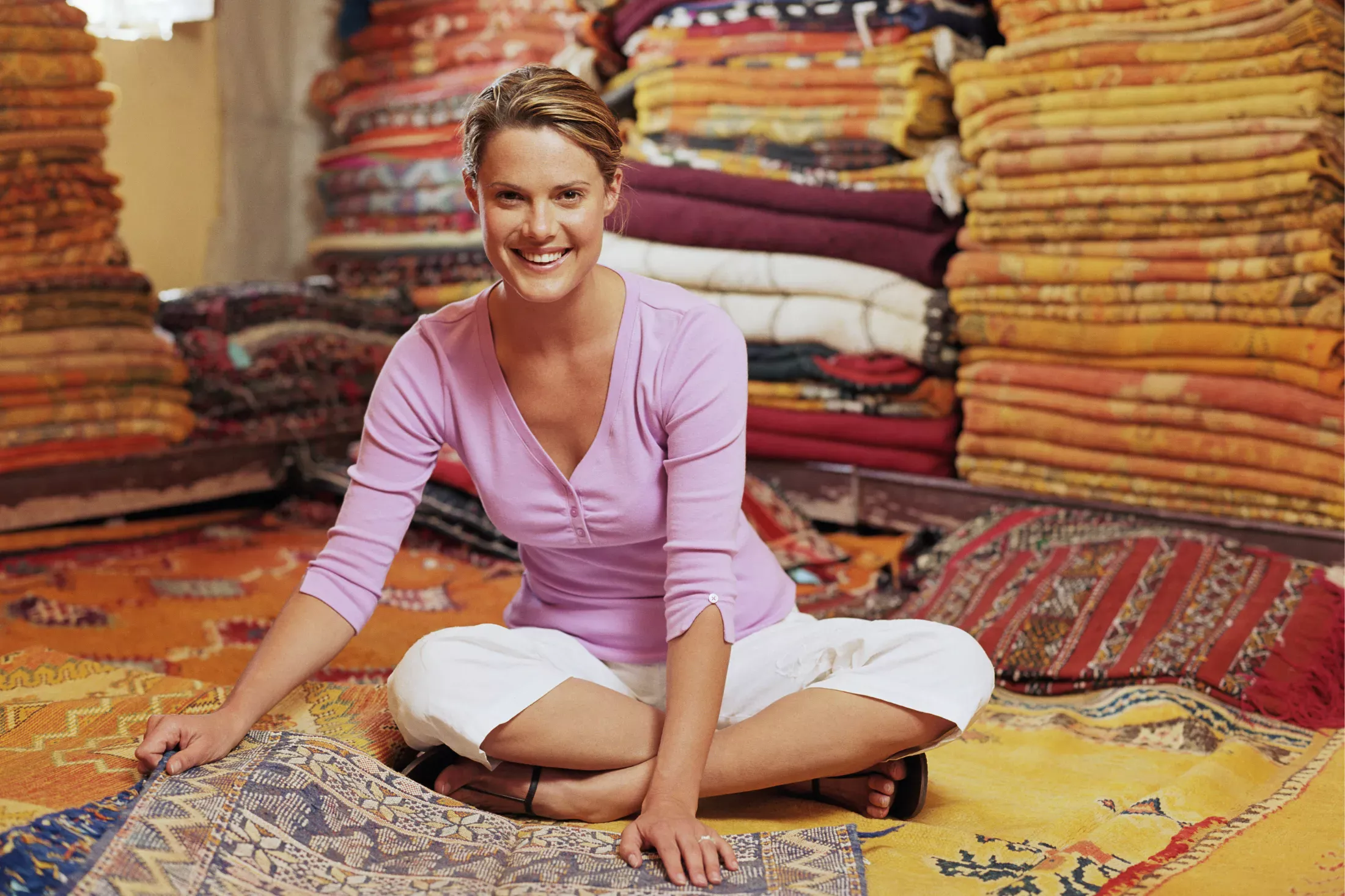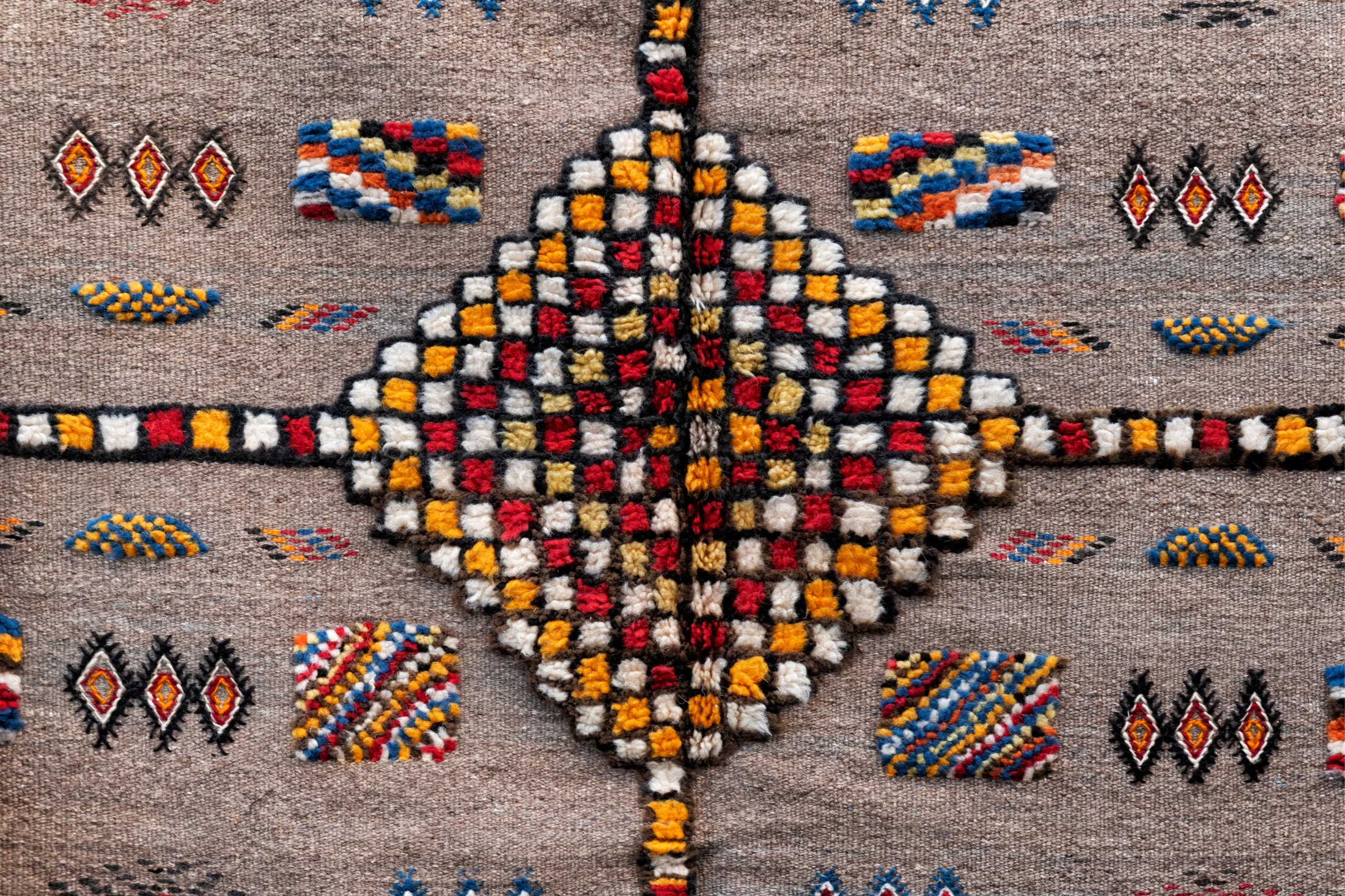The vibrant world of Morocco rugs is a fusion of ancient craft, cultural symbolism, and captivating aesthetics. The indigenous tribes of Morocco have been creating these rugs since the Paleolithic Era, their utility traditionally outweighing decorative purposes. The diverse climates of Morocco, from the snow-capped Atlas Mountains to the Sahara desert, heavily influenced the rugs’ designs and materials.
Exploring the Art and Culture of Morocco Rugs
From Utility to Art: The Evolution of Morocco Rugs

The journey of Morocco rugs from everyday objects to globally sought-after art pieces is as captivating as the rugs themselves. The indigenous nomadic and Berber tribes of Morocco initially weaved these rugs as functional items, using them as bed coverings, sleeping mats, self-adornments, burial shrouds, and even as protective saddle blankets. These rugs were more than functional tools – they were canvases where weavers inscribed the heart of their tribes, passing down intricate, traditional designs from generation to generation. This process is one of a kind and nurtured through tribal heritage, interlaced with rich symbolism that remains etched in every weave of Morocco rugs.
Each major city in Morocco has contributed to the fascinating evolution of rug styles, but Fes and Rabat hold a special place in this narrative. Fes rose to prominence as a crucial hub of rug-making during the golden age of the Marinid Dynasty in the 13th century. Here, over a hundred dye workers and numerous artisan embroidery studios filled the city’s medina, leading to the creation of distinct rugs that reflect the city’s historical and cultural richness. On the other hand, Rabat, Morocco’s coastal capital, developed a reputation for its unique rug styles that harmoniously blend floral and diamond-shaped elements, and bare fields, each rug telling a tale of its own.
The Global Appeal of Morocco Rugs

The 20th century marked a turning point for Morocco rugs as they began to catch the eye of western mid-century modern designers. The Berber rugs, characterized by their thick pile and tribal designs, found a special admirer in renowned designer Le Corbusier. Their raw, primitive appeal presented a compelling juxtaposition against the sophisticated elegance of traditional Oriental rugs. Paired with the modernist décor, the rugs gave birth to a new aesthetic that swept across the design world. Today, these vintage and antique Morocco rugs have crossed the realms of time and geography. They are celebrated for their decorative flexibility, affordable price range, and the unique, rustic charm they bring to interiors across the world.
Besides their visual appeal these rugs hold a lot of symbolic depth. The designs on many rugs often serve as a narrative, portraying stages in a woman’s life or themes of birth and fertility. This potent symbolism transforms these rugs into an intriguing mirror of femininity and life, with the sequence of motifs narrating a compelling story of life events. These motifs, interpreted with a touch of imagination, can bring to life the various phases of womanhood. Such profound symbolism makes each Morocco rug a unique piece of art, narrating a timeless tale woven in vibrant colors and intricate patterns.
Diving Deeper: Types of Morocco Rugs
Each type of Moroccan rug carries a distinct identity, narrating a unique story of history and artisanal skills. The type of rug you encounter is a reflection of the tribal affiliations of the weavers, their personal inspirations, and the age-old traditions of the area from where they originate.
Classic Elegance: Beni Ourain Rugs

Beni Ourain rugs are timeless pieces that have firmly established their place as Moroccan classics. Characterized by striking black or brown geometric diamond motifs, which contrast beautifully against a backdrop of natural cream or ivory wool, these rugs exemplify minimalistic elegance. Originating from the skilled weavers of the Beni Ourain tribes in the Rif Mountains near Taza, they show the tradition of weaving passed down through generations and cherished for their simplicity and sophistication.
Every Color Tells a Story: Azilal Rugs
Azilal rugs are a visual spectacle, crafted by the Azilali Berber tribes. Bursting with vibrant colors and dynamic geometric lines, these rugs remained hidden from the global market until the late 20th century. The unique blend of natural tinted wool and cotton in these rugs, paired with their bright patterns, has made them a favorite among creatives and modern art enthusiasts alike, who are captivated by their playful appeal and artistic versatility.
Vibrant Touch: Boujad Rugs
Synonymous with bold, intense colors, Boujad rugs are the perfect choice for adding a lively splash of color to any room. They boast a myriad of beautiful Moroccan motifs, lozenges, and lines, crafted meticulously using high-quality wool and natural dyes. Authentic Boujad rugs are handcrafted in Haouz, a region in Morocco renowned for its culture and artistic heritage, making them an embodiment of the area’s tradition.
Recycling Art: Boucherouite Rugs
For those conscious of their environmental footprint, Boucherouite rugs offer a mix of aesthetics and sustainability. Crafted from used old fabric knotted together, these rugs present an eco-friendly alternative without compromising on beauty or style. With their colorful, abstract designs, they showcase the weavers’ ingenuity in transforming waste into art, resulting in easy-to-wash rugs that are as practical as they are visually appealing.
Vivid and Durable: Moroccan Kilim Rugs
Moroccan Kilim rugs, flat-woven by the skilled women of the Atlas Mountains, stand out with their vivid colors and bold designs. Created to endure the high sun exposure of mountainous regions, these rugs display a robust durability that makes them suitable for both indoor and outdoor use. The intertwining of bright hues and geometric patterns in these rugs represents a tangible manifestation of the lively local culture and the artistic dexterity of the weavers.
Artistic Complexity: Taznakht Rugs

Taznakht rugs are a testament to the artistry and patience of Moroccan weavers. Available in a wide variety of styles, these rugs can range from simple geometric patterns to intricate, complex designs with a vibrant palette of colors. What sets them apart is their unique three-dimensional design, which combines embroidery, knotting, and flat weaving to create an amazing texture. Whether you prefer the minimalist elegance or the flamboyant complexity, these rugs can accommodate a broad spectrum of aesthetic preferences.
Morocco rugs offer a glimpse into the country’s diverse history, culture, and artistic expression. These rugs are a testament to Morocco’s deep-rooted tradition of weaving – a tradition that has withstood the test of time and continues to enthrall us with its timeless appeal, global reach, and infinite variety. So the next time you see a Moroccan rug, remember – you’re not just looking at a piece of decor, but a piece of history, lovingly crafted and richly detailed, that has journeyed through time to adorn your living space. Their beauty lies not only in their aesthetic appeal but also in the stories they narrate, making them cherished pieces of art in homes worldwide.
